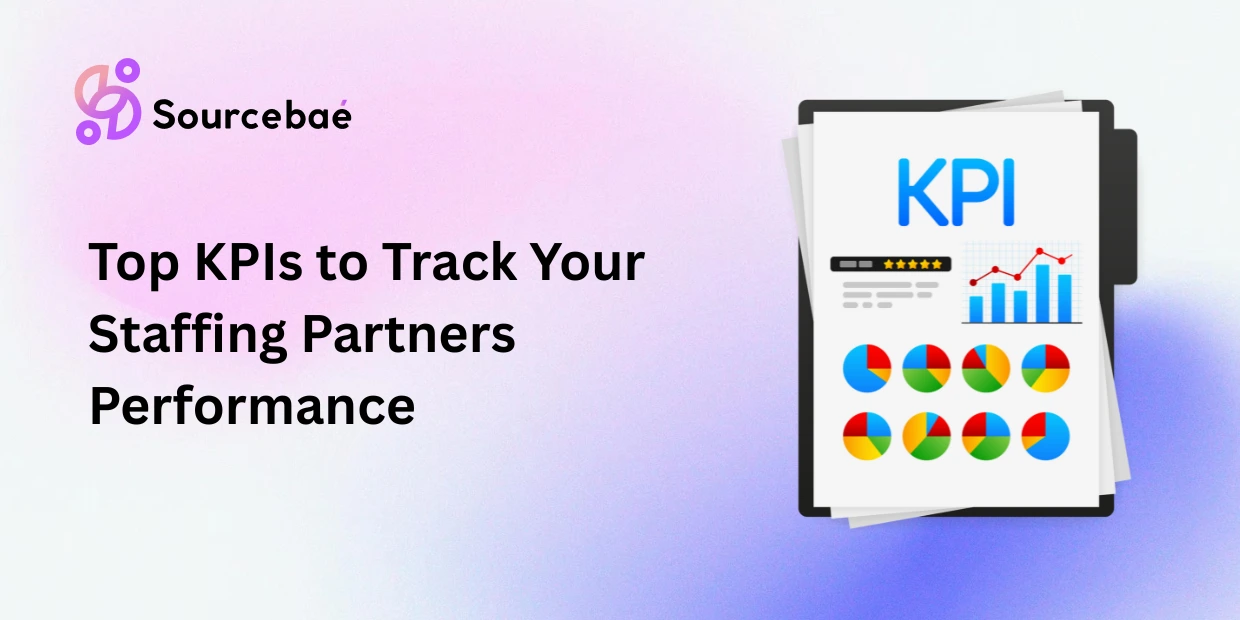When managing relationships with external staffing partners, measuring their performance is crucial for ensuring you receive optimal value from these strategic partnerships. The right Key Performance Indicators (KPIs) provide objective data to evaluate efficiency, quality, and long-term impact of your staffing vendor relationships.
Core Operational KPIs
Time-to-Fill and First Submittal Time
Time-to-fill measures the duration from when a job requisition is submitted to when a candidate actually starts working. This fundamental metric reveals your staffing partner’s ability to quickly mobilize their talent networks and sourcing capabilities. However, complement this with first submittal time, which tracks how quickly your partner provides their initial qualified candidate submission. An excellent benchmark for first submittal time is 4 days, indicating strong database depth and sourcing efficiency.
Fill Rate and Completion Rate
The fill rate measures the percentage of job orders your staffing partner successfully completes versus the total orders received. This metric directly reflects their operational efficiency and market reach. A consistently high fill rate demonstrates reliable service delivery and strong candidate pipelines. Track this alongside order completion rate to understand not just how many positions they fill, but how consistently they complete assigned requisitions.
Submittal-to-Hire Ratio
This critical efficiency metric tracks how many candidate submittals result in successful hires. The ideal range typically falls between 3-5 qualified submittals per opening. Lower ratios suggest highly effective screening and candidate matching, while higher numbers may indicate insufficient pre-screening or misalignment with role requirements.
Quality and Performance Metrics
Quality of hire represents the long-term value and performance of placed candidates. Measure this through multiple dimensions including:
- Performance evaluations at 6, 12, and 18-month intervals
- Time-to-productivity for new hires
- Manager satisfaction scores
- Integration success with existing teams
This metric connects recruiting efforts directly to business impact and provides the most meaningful assessment of your staffing partner’s effectiveness.
Retention and Turnover Rates
Track both new hire retention rates and employee turnover rates for placements. High turnover within the first year indicates potential mismatches in candidate screening or unrealistic expectations. Monitor retention at 90 days, 6 months, and annually to identify patterns and improvement opportunities.
Interview-to-Offer Conversion Rate
This metric reveals candidate preparation quality and how well your staffing partner understands role requirements. When partners consistently present candidates who advance through your interview process, it demonstrates effective screening and candidate preparation capabilities.
Service Delivery and Responsiveness KPIs
Bill Rate Compliance and Pricing Accuracy
Monitor how consistently your staffing partner adheres to agreed-upon billing rates and contract terms. Track billing accuracy, invoice timeliness, and rate card compliance to ensure financial predictability and contract adherence.
Communication and Account Management Quality
Evaluate the quality of ongoing relationship management through metrics such as:
- Response time to new requirements
- Proactive communication about market conditions
- Issue resolution timeframes
- Account manager accessibility and expertise
Compliance and Risk Management
Assess your partner’s adherence to compliance requirements, background check completion rates, and onboarding documentation accuracy. This is particularly crucial for organizations in regulated industries or those with specific security requirements.
Strategic Partnership Metrics
Client Satisfaction and Net Promoter Score
Implement regular satisfaction surveys to gauge overall partnership health. Track your organization’s Net Promoter Score (NPS) regarding the staffing partner’s services, which provides insight into long-term relationship viability and service quality.
Redeployment Rate
For temporary and contract staffing, monitor the redeployment rate – the percentage of contractors successfully placed in new assignments after completing previous ones. High redeployment rates indicate strong candidate relationships and operational efficiency.
Cost Per Hire and Total Cost of Ownership
Beyond basic placement fees, calculate the total cost per hire including administrative overhead, training costs, and time investment from your internal team. This comprehensive cost analysis provides true ROI visibility for your staffing partnerships.
Advanced Performance Indicators
Pipeline Velocity and Sourcing Channel Effectiveness
Track how quickly candidates move through your staffing partner’s recruitment pipeline and analyze which sourcing channels produce the highest-quality candidates. This data helps optimize sourcing strategies and resource allocation.
Diversity and Inclusion Metrics
Modern staffing evaluations should incorporate diversity metrics to ensure partners support your organization’s inclusion goals. Track demographic representation in candidate pools and successful placements to evaluate inclusive sourcing practices.
Technology Integration and Data Quality
Assess your partner’s technological capabilities, including system integration efficiency, data accuracy, and reporting capabilities. Strong technology infrastructure correlates with better service delivery and reduced administrative burden.
Implementation Best Practices
Establish Weighted Scorecards
Create comprehensive scorecards that weight different KPIs based on your organizational priorities. Financial metrics might carry more weight for cost-conscious organizations, while quality metrics may be prioritized in roles requiring specialized expertise.
Regular Performance Reviews
Conduct structured performance reviews quarterly or bi-annually to discuss trends, address issues, and identify improvement opportunities. Use data-driven discussions to maintain accountability and drive continuous improvement.
Benchmark Against Industry Standards
Compare your staffing partner’s performance against industry benchmarks to ensure competitive service levels. The American Staffing Association provides industry standards for many key metrics, enabling objective performance evaluation.
Conclusion
Effective staffing partner management requires a balanced approach to KPI tracking that encompasses efficiency, quality, service delivery, and strategic value. By implementing comprehensive measurement frameworks focused on these core areas, organizations can ensure their staffing partnerships deliver optimal results while maintaining accountability and driving continuous improvement. Regular monitoring and data-driven discussions with partners create transparent relationships that benefit both parties and ultimately contribute to organizational success.






